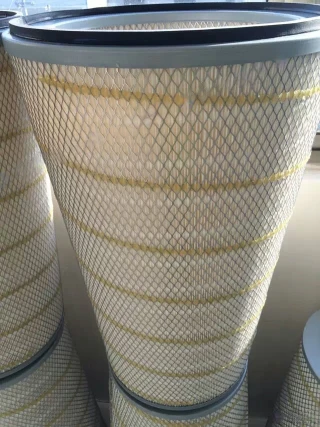 Tel:
+8615930870079
Tel:
+8615930870079
Nën . 23, 2024 21:21 Back to list
vacuum cartridge
Understanding Vacuum Cartridge Technology
Vacuum cartridges play a pivotal role in various industrial and technological applications, leveraging the principles of vacuum suction and filtration. These devices are designed to operate under reduced pressure, allowing them to efficiently extract substances from their surroundings. In recent years, their versatility has led to an increased prevalence in fields ranging from manufacturing to medical technology.
At its core, a vacuum cartridge is a container that creates a vacuum environment. This is achieved through the removal of air or other gases, resulting in a pressure lower than that of the surrounding atmosphere. The primary function of these cartridges is to facilitate the transfer of materials without contamination and to maintain the integrity of sensitive substances.
One of the key applications of vacuum cartridges is in the filtration process. In many industries, including pharmaceuticals, food processing, and chemical manufacturing, maintaining product purity is crucial. Using vacuum cartridges allows for the efficient removal of particulates, bacteria, and other contaminants from liquids and gases. By applying vacuum pressure, these cartridges enhance the flow of materials through filter media, which leads to expedited filtration and improved overall productivity.
vacuum cartridge

In the medical field, vacuum cartridges are increasingly used in diagnostic devices and laboratory equipment. For instance, blood collection tubes often incorporate a vacuum system that ensures the safe collection and preservation of biological samples. This not only aids in accurate testing but also minimizes exposure to contaminants. Furthermore, vacuum cartridges are utilized in surgical suction devices, which are essential for maintaining a clear operative field by removing blood and other fluids during procedures.
The design of vacuum cartridges has evolved significantly, with advancements in materials and technology leading to improved performance and durability. Many modern cartridges are constructed from high-quality plastics and composites that resist chemical degradation and enhance longevity. Additionally, the incorporation of specialized filters allows for fine-tuning in various applications, catering to specific needs such as particle size and retention efficiency.
Despite their numerous advantages, the implementation of vacuum cartridge technology is not without challenges. Proper maintenance is essential to ensure optimal performance and prevent failures that could compromise the entire system. Regular inspection and replacement of filter media are necessary to maintain efficiency and prevent clogging. Furthermore, industries must adhere to stringent regulations regarding the materials used in the production of vacuum cartridges, especially in environments where product contamination could have serious consequences.
In conclusion, vacuum cartridges represent a critical component in numerous applications across various industries. Their ability to efficiently filter and preserve substances under vacuum conditions enhances product quality and safety. As technology continues to advance, we can anticipate further innovations in vacuum cartridge design and functionality, enabling even wider applications and improved effectiveness. Understanding the principles and applications of vacuum cartridge technology is essential for professionals seeking to optimize processes and ensure high-quality outcomes in their respective fields.
-
Types and Applications of Air Filtration CartridgesNewsJul.28,2025
-
The Role of Gas Turbine FiltersNewsJul.28,2025
-
Mastering Air Filter Cartridge UseNewsJul.28,2025
-
Advanced Turbine Filters for Modern Gas TurbinesNewsJul.28,2025
-
Cellulose Air Filter Cartridge Advantages in Dust FiltrationNewsJul.28,2025
-
Cellulose Filters for Air Particle ReductionNewsJul.28,2025

 Email:
Email:





